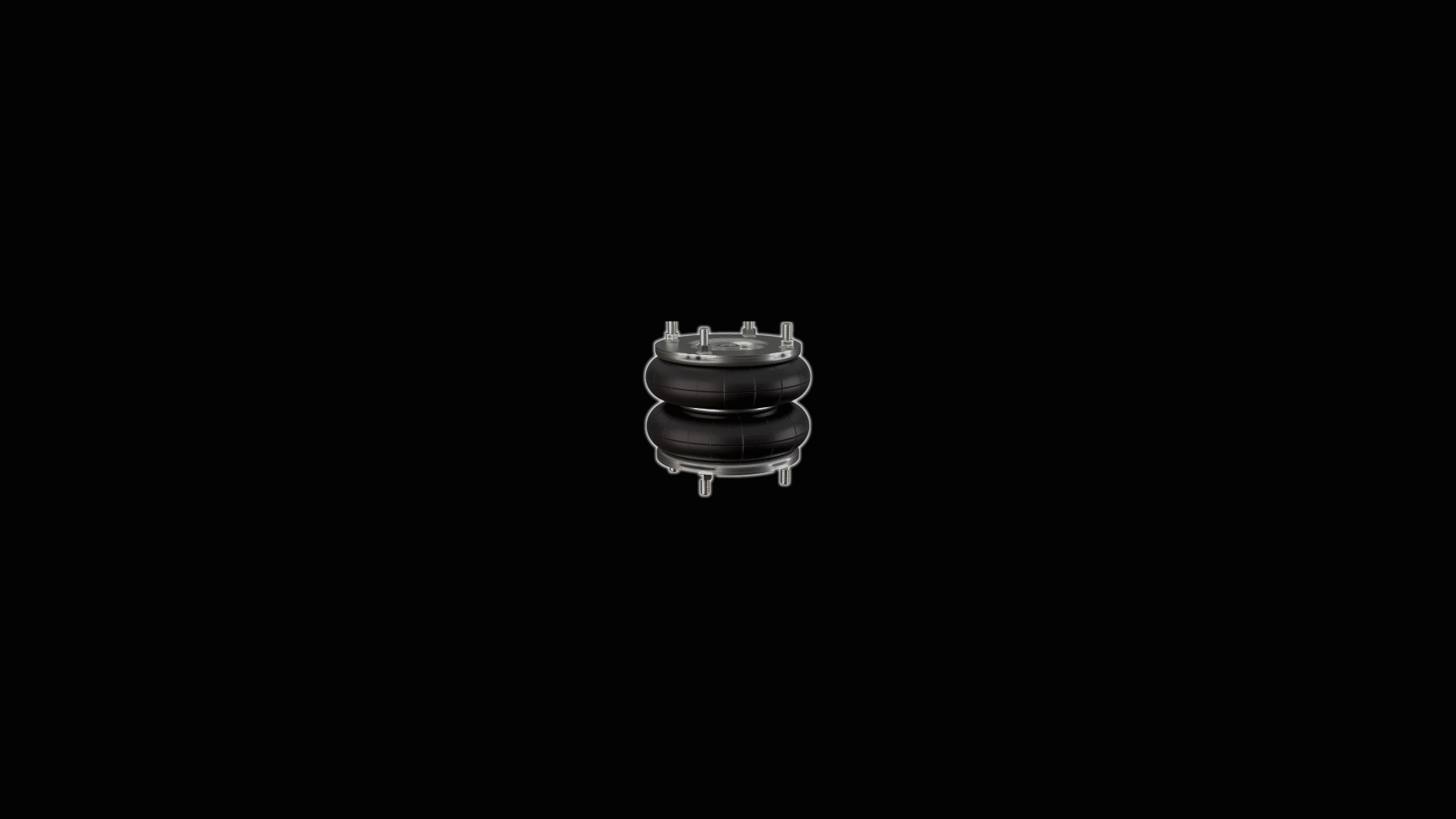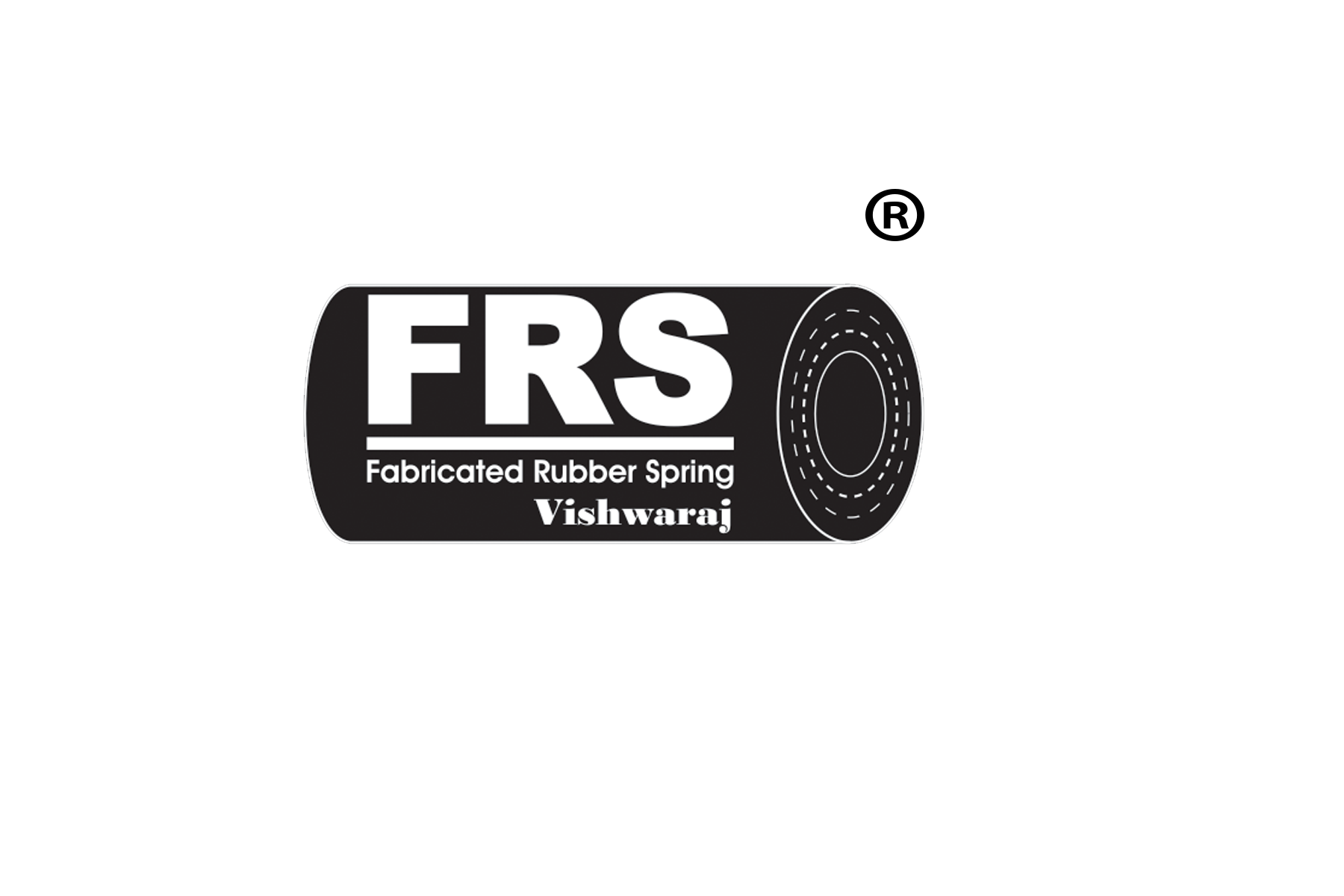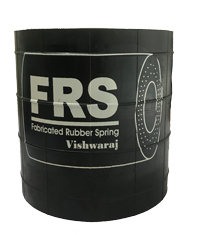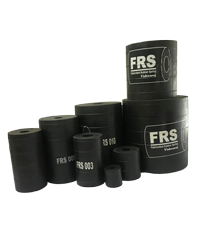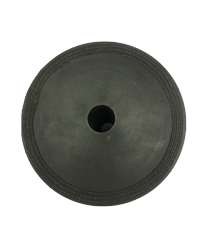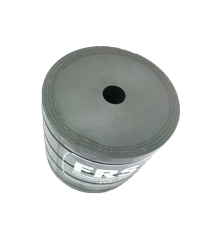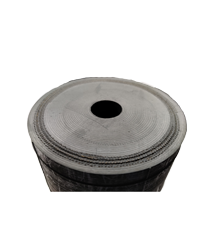Quality Policy
Equipments and machinery in industry create vibrations , shock impacts and noise , which cause damages, disturb operations and result in costly down time . The vibrations may be created by moving / vibrating parts of the machine or may be transmitted to the equipment from the floor or the base of the machine. Isolator springs interposed between the equipment and the base absorbs the vibratory energy and releases it gradually as heat. Shocks are created in some operations , the springs can work as dampers and absorb this shock energy as preplanned. To match specific loads, FRS are designed by varying dimensions and materials as required.
An isolator like a rubber fabric spring prevents a vibrating source from affecting the surrounding while the vibration continues. The degree of isolation is the amount of extent of reduction in the transmission of vibration energy from the source to the surrounding. Effective isolators have low natural frequency.
Vibration Isolation An isolator like a coil spring/rubber fabric spring prevents a vibrating source from affecting the surrounding while the vibration continues. The degree of isolation is the amount of extent of reduction in the transmission of vibration energy from the source to the surrounding . Effective isolators have low natural frequency. Damping / Shock Absorption FRS can be used in shock impact applications. The impact is calculated from data of mass of falling body , its height of free fall , velocity etc. The energy released is then absorbed by the spring and a damping effect occurs. Damping is a change in load as the spring is compressed due to shock and returns to its original height. The energy absorbed is converted to heat and is not returned to source. The technical equivalent of damping is called hysteresis of a spring. The vibration isolation springs are generally of lower damping type. Forced / Free Vibration - Disturbing/ Natural Frequency Vibration imposed by a strong external force is forced vibration with a disturbing frequency. When a spring is compressed /pulled and allowed to vibrate freely. It vibrates freely under its own elastic / gravitational forces and that frequency is called Natural Frequency. It is measured in Cycles / Minute - CPM or Cycles / Second – Hertz
Specifications of the Rubber Fabric Spring
|
|
|
|
|||||||||
|---|---|---|---|---|---|---|---|---|---|---|---|
| FRS Spring part No | Outside Dia.mm | Inside Dia.mm | Free Height mm | Minimum Loading Kg | Compressed Height mm | CPM | HZ | Maximum Loading Kg. | Compressed Height mm | CPM | HZ |
| FRS - 1 | 41 | 16 | 44 | 65 | 38 | 414 | 6.9 | 140 | 32 | 304 | 5.1 |
| FRS - 2 | 41 | 16 | 89 | 62 | 76 | 279 | 4.7 | 140 | 65 | 253 | 4.2 |
| FRS - 3 | 83 | 32 | 127 | 178 | 108 | 251 | 4.2 | 400 | 92 | 186 | 3.2 |
| FRS - 4 | 76 | 25 | 102 | 187 | 86 | 174 | 2.9 | 400 | 74 | 161 | 2.7 |
| FRS - 5 | 76 | 25 | 76 | 211 | 65 | 293 | 4.9 | 410 | 55 | 162 | 3.6 |
| FRS - 6 | 102 | 51 | 152 | 236 | 130 | 216 | 3.6 | 490 | 110 | 165 | 2.7 |
| FRS - 7 | 89 | 25 | 152 | 253 | 130 | 2233 | 3.7 | 540 | 110 | 165 | 2.8 |
| FRS - 8 | 114 | 52 | 152 | 320 | 130 | 235 | 3.9 | 750 | 110 | 156 | 2.6 |
| FRS - 9 | 114 | 25 | 178 | 498 | 151 | 213 | 3.6 | 1130 | 129 | 158 | 2.6 |
| FRS - 10 | 152 | 35 | 203 | 700 | 184 | 206 | 3.43 | 1600 | 163 | 148 | 2.45 |
| FRS - 11 | 152 | 25 | 203 | 990 | 173 | 191 | 3.18 | 2100 | 147 | 144 | 2.4 |
| FRS - 12 | 191 | 89 | 254 | 1005 | 216 | 176 | 2.9 | 2325 | 184 | 142 | 2.3 |
| FRS - 13 | 140 | 51 | 178 | 700 | 151 | 181 | 3.01 | 1490 | 129 | 175 | 2.9 |
| FRS - 14 | 120 | 50 | 150 | 350 | 130 | 208 | 3.5 | 705 | 110 | 160 | 2.7 |
| FRS - 15 | 165 | 76 | 203 | 680 | 173 | 195 | 3.25 | 1490 | 147 | 144 | 2.4 |
| FRS - 16 | 152 | 25 | 152 | 780 | 132 | 220 | 3.8 | 1800 | 110 | 171 | 2.8 |
| FRS - 17 | 152 | 25 | 254 | 1025 | 216 | 179 | 3.8 | 2050 | 185 | 145 | 2.35 |
| FRS - 18 | 165 | 51 | 203 | 880 | 172 | 186 | 3.1 | 1950 | 147 | 160 | 2.7 |
| FRS - 19 | 191 | 89 | 203 | 1020 | 172 | 186 | 3.1 | 1950 | 147 | 164 | 2.73 |
| FRS - 20 | 203 | 89 | 305 | 1200 | 259 | 158 | 2.6 | 2610 | 221 | 116 | 1.92 |
| FRS - 21 | 203 | 51 | 203 | 1690 | 173 | 181 | 3.3 | 3725 | 147 | 165 | 2.75 |
| FRS - 22 | 229 | 51 | 203 | 2315 | 173 | 182 | 3.3 | 5065 | 147 | 151 | 2.5 |
| FRS - 23 | 254 | 51 | 356 | 2445 | 302 | 148 | 2.45 | 5445 | 259 | 110 | 1.85 |
| FRS - 24 | 254 | 51 | 203 | 2935 | 173 | 199 | 3.32 | 6665 | 147 | 159 | 2.65 |
| FRS - 25 | 279 | 51 | 152 | 3645 | 130 | 220 | 3.65 | 8890 | 110 | 204 | 3.4 | FRS - 26 | 279 | 51 | 203 | 3690 | 173 | 195 | 3.25 | 8715 | 147 | 138 | 2.31 |
